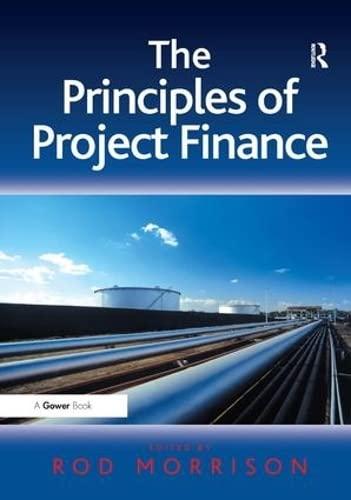Answered step by step
Verified Expert Solution
Question
1 Approved Answer
fundemental of financial management 20-7 not the one posted but the updated version of the question. 20-7 LEASE ANALYSIS As part of its overall plant
fundemental of financial management 20-7
20-7 LEASE ANALYSIS As part of its overall plant modernization and cost reduction program, the management of Tanner-Woods Textlie Mills has decided to install a new automated weaving loom. In the capital budgeting analysis of this equipment, the IRR of the project was 20% versus a project required return of 12%. The loom has an after-tax cost of $187,500. The after-tax amount needed can be borrowed from the bank through a 4 -year amortized loan at a 10% interest rate, with payments to be made at year-end. In the event the loom is purchased, the manufacturer will contract to maintain and service it for a fee of $20,000 per year paid at year-end. Tanner-Woods's marginal federal-plus-state tax rate is 25%. United Automation Inc, maker of the loom, has offered to lease the loom to Tanner-Woods for 565,000 'upon delivery and installation ( at t=0 ) plus 4 add itional annual lease payments of $65,000 to be made at the end of Years 1 through 4 . (Note that there are 5 lease payments in total.) The lease agreement includes maintenance and servicing. Actually, the loom has an expected life of 10 years, at Which time its expected salvage value is zero; however, after 4 years, its market value is expected to equal $50,000. (Note that the loom was fully depreciated at the time of purchase, so its book value is zero.) Tanner-Woods plans to buld an entirely new plant in 4 years, so it has no interest in leasing or owning the proposed loom for more than that period. a. Should the loom be leased or purchased? b. The salvage value is clearly the most uncertain cash flow in theanalysis. Assume that the appropriate salvage value pretax discount rate is 15%. What would be the effect of a salvage value risk adjustment on the decision? c. The original analysis assumed that Tanner-Woods would not need the loom after 4 years. Now assume that the firm will continue to use the loom after the lease expires. Thus, it it leased, Tanner-Woods would have to buy the asset after 4 years at the then existing market value. What effect would this requirement have on the basic analysis? (No numerical analysis is tequired; just verbalize.) not the one posted but the updated version of the question. 

Step by Step Solution
There are 3 Steps involved in it
Step: 1

Get Instant Access to Expert-Tailored Solutions
See step-by-step solutions with expert insights and AI powered tools for academic success
Step: 2

Step: 3

Ace Your Homework with AI
Get the answers you need in no time with our AI-driven, step-by-step assistance
Get Started


